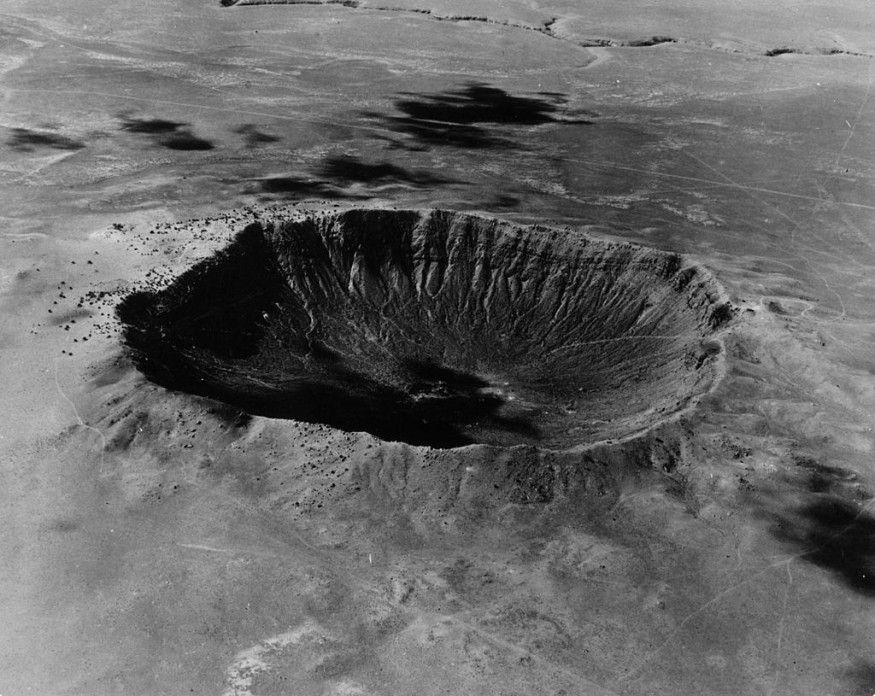A 2.5-kilometer-wide asteroid blasted into the supercontinent of Pangaea on the eastern border of present-day Wyoming some 280 million years ago, before the birth of the Rocky Mountains-or even the dinosaurs.
The impact's heat and shock wave would have killed anything within 400 kilometers, making it one of North America's biggest asteroid collisions.

Plate tectonics had the final laugh despite the upheaval on Earth's surface. Invading oceans and shifting landscapes buried the resulting 60-kilometer-wide crater, roughly the size of Rhode Island, in a sandstone tomb. And the crater may still be there, kilometers below, to this day.
This is depicted in a new piece. The crater itself has yet to be discovered, but researchers have found a sequence of 31 smaller craters, each barely larger than a football field in the United States.
Boulders released by the impact would have generated these "secondary" craters, which may have landed up to 200 kilometers distant. It's the first time a secondary crater field has been identified on Earth, which is frequent on other celestial bodies like the Moon.
A Fantastic Discovery
"This is a fantastic discovery," says Brandon Johnson, a planetary scientist at Purdue University who was not involved in the research. "The study is thorough, and I'm persuaded," he says, adding that the crater field, which includes 60 candidate holes still to be validated, has the potential to represent 40% of all known craters on Earth.
The minicraters were initially discovered in 2017 on the northeast flank of Sheep Mountain, at the foot of the Rockies in western Wyoming, near Grand Teton National Park.
The team was lead by Thomas Kenkmann, a geologist at the Albert Ludwig University of Freiburg. Fractures in quartz grains discovered at the bottom of the depressions were evidence of a shock that cosmic collisions could have only caused. They led experts to conclude the crater field was generated by an asteroid's hailstorm breaking up in Earth's atmosphere.
However, the scientists quickly uncovered other shocked quartz in craters farther away-far beyond what a single asteroid fragment could cover. Even worse, the craters showed no signs of materials or metals not found in the local geology, as one might anticipate from meteorites.
Odd Shapes
Kenkmann and his colleagues noticed that several craters were elliptical in their search for other possibilities. That's unheard of for space collisions, which, due to their speed, tend to create circular holes even when they strike at oblique angles. The axes of these ellipses projected back to a common point, like blood splatter at a crime scene.
The pattern of the craters resembled the rays and streaks of minor craters that surround major craters on the Moon, such as Tycho's. The researchers conclude this month in the Geological Society of America Bulletin that they present clear evidence that similar structures are conceivable on Earth.
Previous Assumptions
Many geologists previously assumed that thrown stones would break apart or burn Earth's dense atmosphere, preventing a conspicuous crater. However, it was challenging to ensure that the atmosphere was the issue because the erosive force of wind and water can erase these smaller features in decades, according to Kenkmann. Earth has a knack for concealing its scars.
The force that hurled these rocks into the air would have been catastrophic. "Everything is destroyed by a shock wave that passes through the atmosphere," Kenkmann explains. "Nothing would survive."
The researchers discovered molten granite in several of the depressions they investigated. The stones could not have produced the high heat and pressure required to melt rock independently. The melt was most likely caused by plumes of vaporized rock that followed the arcing pathways of the boulders.
It will be one of the largest known craters in the United States if the researchers uncover the central crater they expect. The asteroid that caused the 180-kilometer-wide Chicxulub crater off the coast of Mexico, which killed out the dinosaurs 66 million years ago, would still pale in comparison. For a few years, the Wyoming effect may have changed the climate. However, no significant extinctions have been linked to this time period. "This is a catastrophic occurrence, but it is still localized in scope," Kenkmann adds.
Verifying the impact will need a great deal more investigation. Unfortunately, the Rockies failed to uncover the likely location of the major crater, which is located 70 kilometers northeast of Cheyenne, near the Nebraska border, and is buried 3 kilometers beneath the fossil fuel deposits, according to the team's best estimation.
There are tantalizing hints that some type of abnormality exists down there, based on slight variations in the land's gravitational pull. However, there isn't much else to go on.
Also Read : Tonga Volcanic Explosion Was Strong Enough to Send Gravitational Waves to the Atmosphere
For similar news, don't forget to follow Nature World News!
© 2026 NatureWorldNews.com All rights reserved. Do not reproduce without permission.





